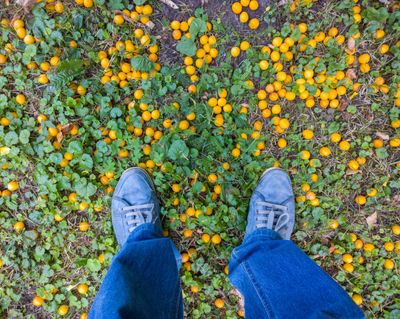What is June Drop?
June drop on fruit trees refers to the tendency of different types of fruit trees to drop immature fruit in springtime, usually around May or June. Although this is sometimes called May drop, it is usually known as June fruit drop. The primary (and usually only) symptom of June fruit drop is small, immature fruit falling off trees. This can happen in apple and citrus trees and also in stone fruit like plums. The causes can be anything from Mother Nature at work to improper pollination.
June Drop Information
Fruit trees have many more flowers in springtime than mature fruit during harvest. In fact, if 100 percent of the blossoms on an apple tree turned into big, ripe apples, it would likely break all of the tree’s branches with the weight. This is one of the reasons gardeners thin out fruit. It is a process of reducing the clusters of small, immature fruit in order to give the healthiest fruit room to grow and mature. According to experts, only one in ten apple tree blossoms should be permitted to turn into fruit. Mother Nature does this thinning process also, just in case you forget. Some part of June drop on fruit trees is just that: nature’s way of thinning out the fruit to give the remaining fruit room to grow. That is a good thing and helps make sure that your fruit can mature into full-size, juicy fruit.
Pollination and June Fruit Drop
One other possible cause of June fruit drop is poor or inadequate pollination. Pollination is necessary for fruit to set, and this involves the transfer of pollen from one blossom to another. If your tree is self-fertile, the pollen transfer can be between blossoms on the one tree. However, many cultivars require another tree of a compatible species for pollination. In either case, you can assist pollination by planting a different compatible species tree within shouting distance of your tree. Another possible reason for inadequate pollination is too little insect activity. Many fruit trees rely on insects, like bees, to carry pollen from one flower to the next. If there aren’t any insects around, there is little pollination. You need to actively encourage these beneficial insects into your garden and orchard. You can do this by planting nectar-rich wildflowers that naturally attract bees and other insects. You should also stop using pesticides that kill helpful insects as well as insect pests.
